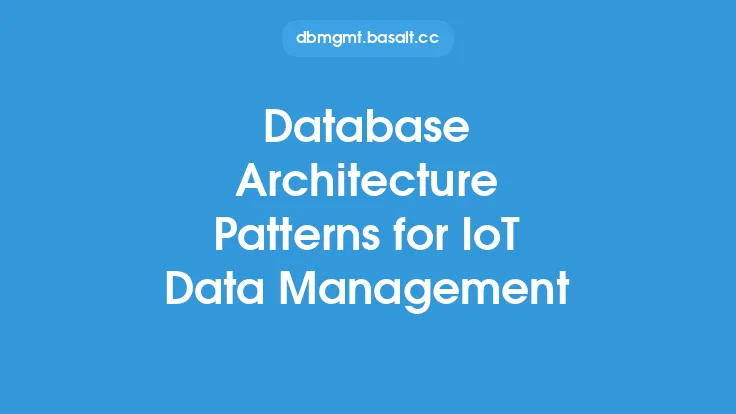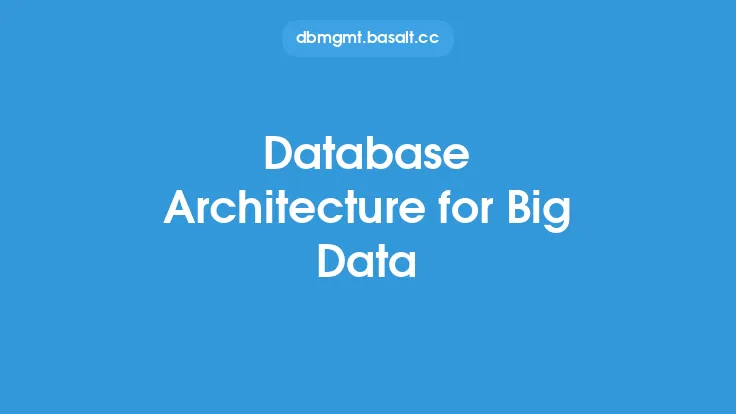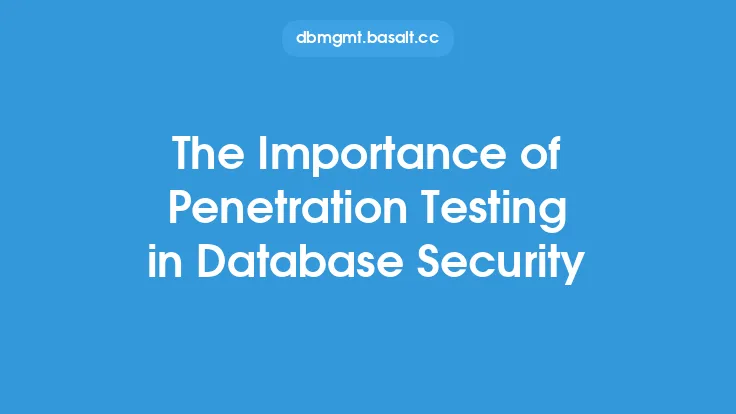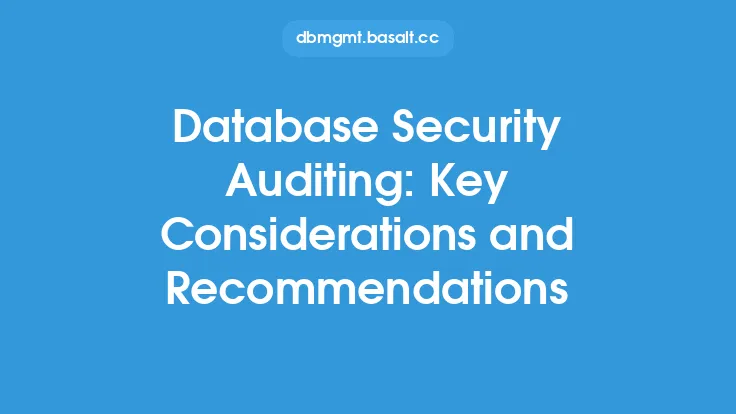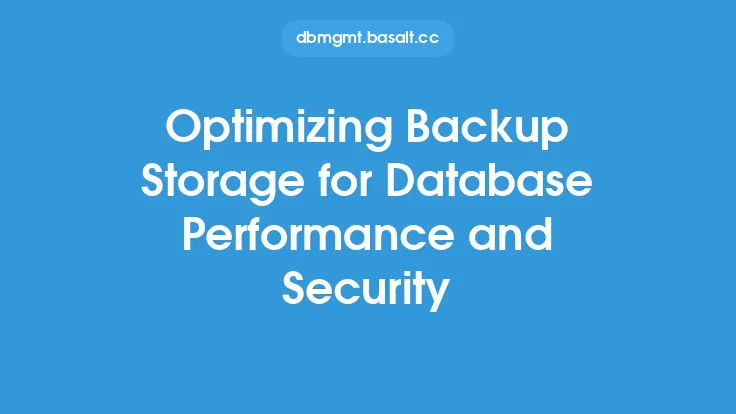Database security is a critical aspect of database administration, as it ensures the confidentiality, integrity, and availability of data stored in a database. A well-designed database security architecture is essential to protect against various types of threats, including unauthorized access, data breaches, and malicious attacks. In this article, we will delve into the key components and best practices of database security architecture, highlighting the importance of a robust security framework for protecting sensitive data.
Introduction to Database Security
Database security refers to the measures taken to protect a database from unauthorized access, use, disclosure, disruption, modification, or destruction. It involves a combination of administrative, technical, and physical controls to ensure the security and integrity of the data. A database security architecture should be designed to address various security threats, including internal and external threats, and to ensure compliance with relevant laws and regulations.
Key Components of Database Security Architecture
A comprehensive database security architecture consists of several key components, including:
- Authentication and Authorization: This component ensures that only authorized users can access the database and perform specific actions. Authentication mechanisms, such as username and password, biometrics, or smart cards, verify the identity of users, while authorization mechanisms, such as role-based access control, determine the level of access granted to each user.
- Data Encryption: Data encryption protects data from unauthorized access by converting it into an unreadable format. Encryption can be applied to data at rest (stored in the database) or in transit (being transmitted over a network).
- Access Control: Access control mechanisms, such as firewalls, intrusion detection systems, and virtual private networks (VPNs), regulate incoming and outgoing network traffic to prevent unauthorized access to the database.
- Auditing and Logging: Auditing and logging mechanisms track all database activities, including user logins, queries, and data modifications, to detect and respond to security incidents.
- Backup and Recovery: Regular backups and a robust recovery process ensure that data can be restored in case of a security incident or system failure.
Database Security Threats and Vulnerabilities
Databases are vulnerable to various security threats, including:
- SQL Injection: Malicious SQL code is injected into a database to extract or modify sensitive data.
- Cross-Site Scripting (XSS): Malicious code is injected into a web application to steal user data or take control of user sessions.
- Privilege Escalation: An attacker gains elevated privileges to perform unauthorized actions on the database.
- Denial of Service (DoS): A database is overwhelmed with traffic to make it unavailable to legitimate users.
- Data Breaches: Sensitive data is stolen or compromised due to inadequate security measures.
Best Practices for Database Security
To ensure the security and integrity of a database, follow these best practices:
- Implement Strong Authentication and Authorization: Use robust authentication mechanisms, such as multi-factor authentication, and enforce role-based access control to limit user privileges.
- Use Encryption: Encrypt sensitive data at rest and in transit to protect it from unauthorized access.
- Regularly Update and Patch: Keep the database management system and related software up-to-date with the latest security patches and updates.
- Monitor and Audit: Regularly monitor database activity and audit logs to detect and respond to security incidents.
- Use Secure Protocols: Use secure communication protocols, such as HTTPS and SSH, to protect data in transit.
Database Security Tools and Technologies
Several tools and technologies can help implement and manage database security, including:
- Database Firewalls: Network-based firewalls that regulate incoming and outgoing database traffic.
- Intrusion Detection and Prevention Systems: Systems that detect and prevent malicious activity on the database.
- Encryption Tools: Tools that encrypt data at rest and in transit, such as SSL/TLS and IPsec.
- Access Control Tools: Tools that manage user access and privileges, such as role-based access control and attribute-based access control.
- Auditing and Logging Tools: Tools that track and analyze database activity, such as log analysis software and security information and event management (SIEM) systems.
Conclusion
A well-designed database security architecture is essential to protect sensitive data from various security threats. By understanding the key components of database security, including authentication and authorization, data encryption, access control, auditing and logging, and backup and recovery, organizations can implement a robust security framework to ensure the confidentiality, integrity, and availability of their data. By following best practices, such as implementing strong authentication and authorization, using encryption, and regularly updating and patching, organizations can minimize the risk of security incidents and ensure compliance with relevant laws and regulations.
